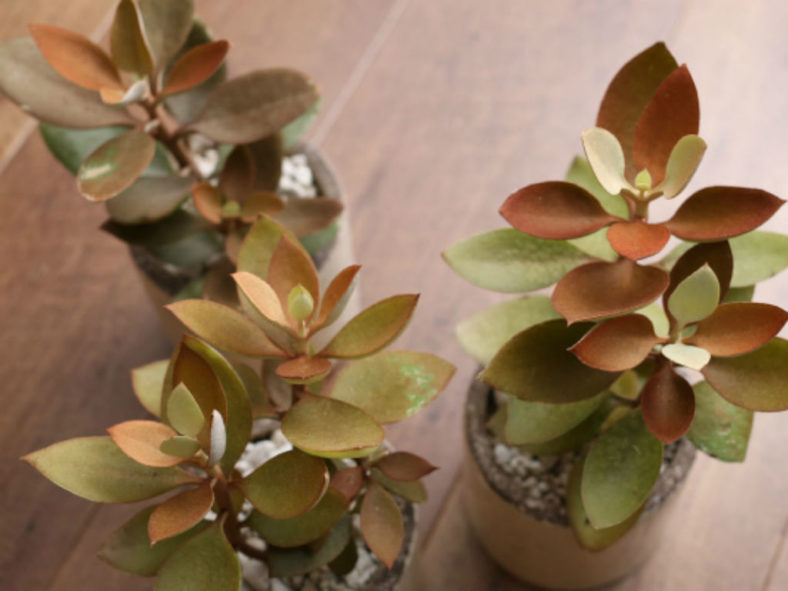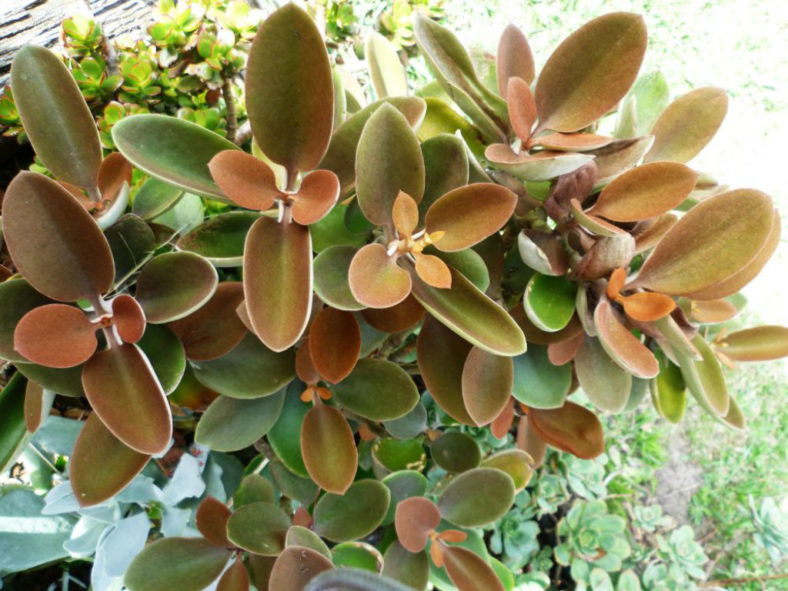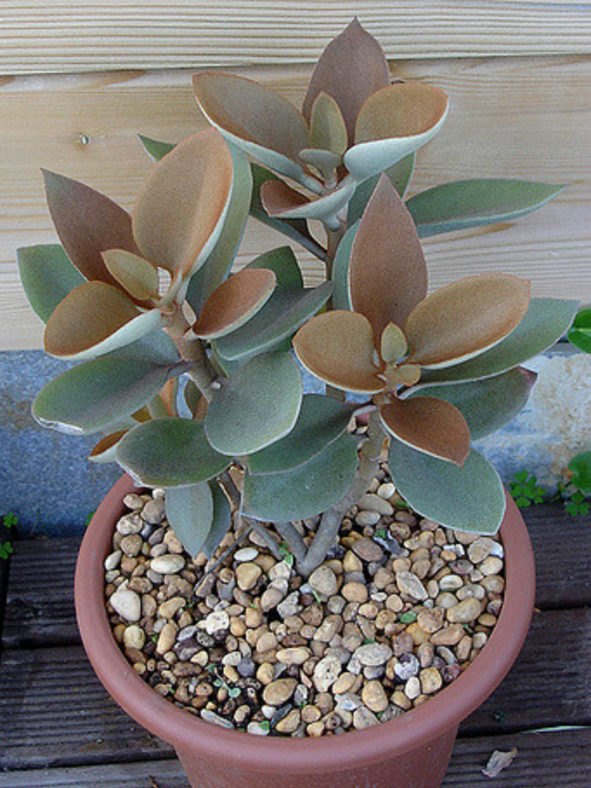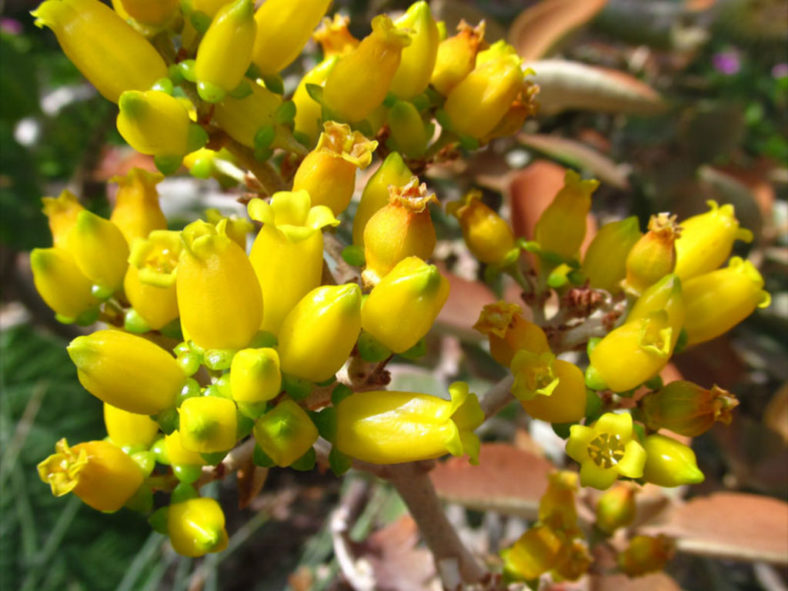Scientific Name
Kalanchoe orgyalis Baker
Common Name(s)
Copper Spoons, Cinnamon Bear, Leather Plant, Shoe Leather Kalanchoe
Synonym(s)
Kalanchoe antanosiana, Kalanchoe cantonasyana
Scientific Classification
Family: Crassulaceae
Subfamily: Sedoideae
Tribe: Kalanchoeae
Genus: Kalanchoe
Etymology
The specific epithet "orgyalis" (pronounced "or-gee-AY-liss") means "fathom-sized" and refers to the growth habit of this species, which can reach a height close to a fathom (≈ 6 feet, ca. 1.8 m) in its natural habitat.
Origin
Kalanchoe orgyalis is native to southern and southwestern Madagascar. It grows as a xerophytic bush on rocks and various types of soil.
Description
Kalanchoe orgyalis is a succulent shrub with stout, erect, much-branched stems that bear fleshy, ovate leaves that fold upward from the middle. It slowly grows and can reach a height of up to 6.6 feet (2 m), but is usually seen as a smaller plant. The stems and leaves are densely covered with characteristic short hairs, often very appressed, resulting in a glabrous appearance. The leaves are bronze to gray on the underside, while the upper surface is felted with fine cinnamon-colored hairs that eventually age to the same color as the lower surface. They can measure up to 6 inches (15 cm) in length and 4 inches (10 cm) in width, and are attached to the stem by a petiole that can reach a length of 0.6 inches (1.5 cm).
The bright yellow flowers appear in terminal clusters at the branch tips from late winter to early spring.

How to Grow and Care for Kalanchoe orgyalis
Hardiness: USDA hardiness zones 9b to 11b: from 25°F (-3.9°C) to 50°F (10°C).
Kalanchoe care is minimal, but be cautious about light levels. Intense sunlight can burn the tips of the leaves. When growing Kalanchoes, place pots in partial sun to light shade areas.
The flowering varieties are highly rewarding for their colorful and long-lasting flowers. They prefer bright, sunny locations, especially in the growing season. Water moderately from fall to winter when the growth is most active. Reduce watering during the hottest summer months, when plants are mostly dormant, and during winter, when growth slows significantly. Let the soil surface dry out between waterings. Watch the fleshy leaves for signs of water distress. An ordinary potting soil mix is fine. Feed bi-weekly during the growing season with a liquid fertilizer, or use slow-release pellets.
These small plants require repotting every few years. When repotting, take extra care in handling, as the leaves are somewhat brittle and can snap easily. Clay pots work exceptionally well for planting Kalanchoes. Ensure pots drain well and saucers can empty easily.
Learn more at How to Grow and Care for Kalanchoe.
Links
- Back to genus Kalanchoe
- Succupedia: Browse succulents by Scientific Name, Common Name, Genus, Family, USDA Hardiness Zone, Origin, or cacti by Genus
Photo Gallery
Click on a photo to see a larger version.


